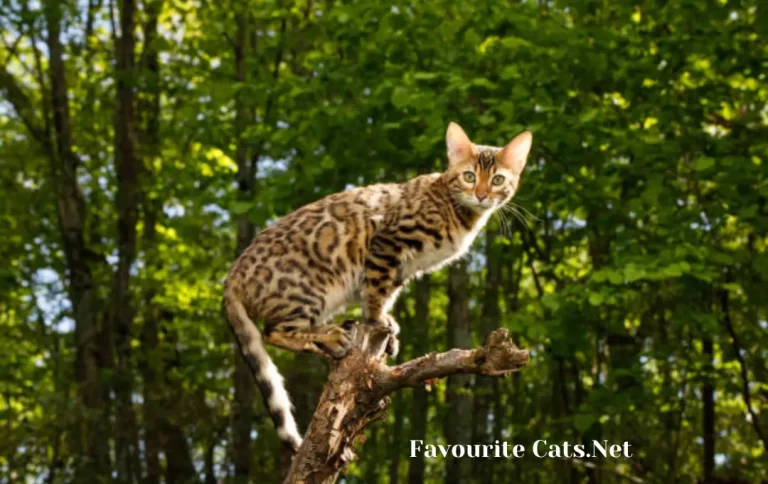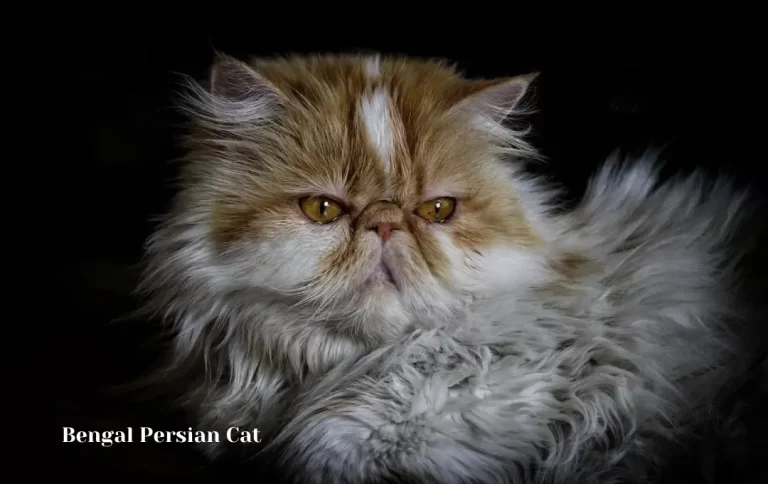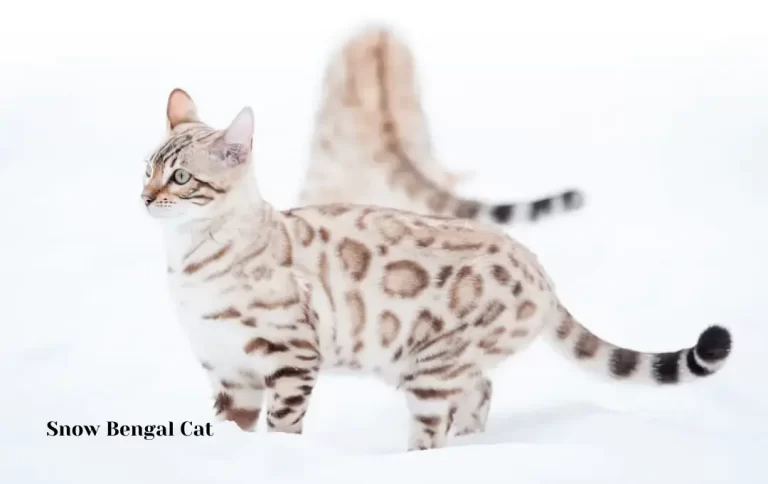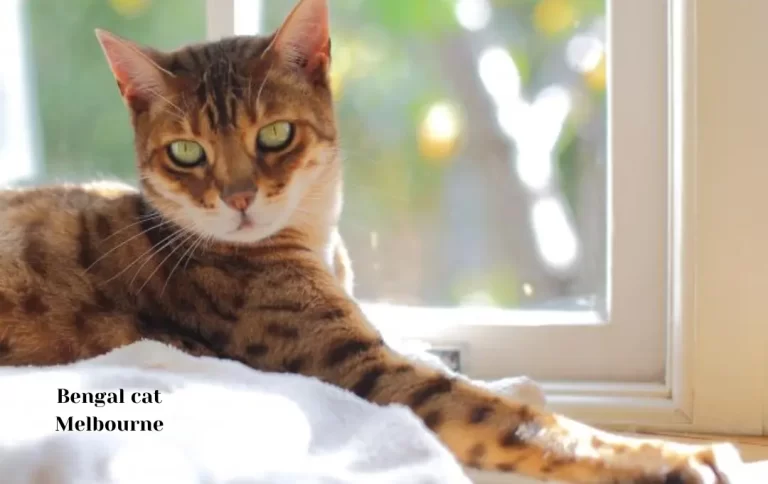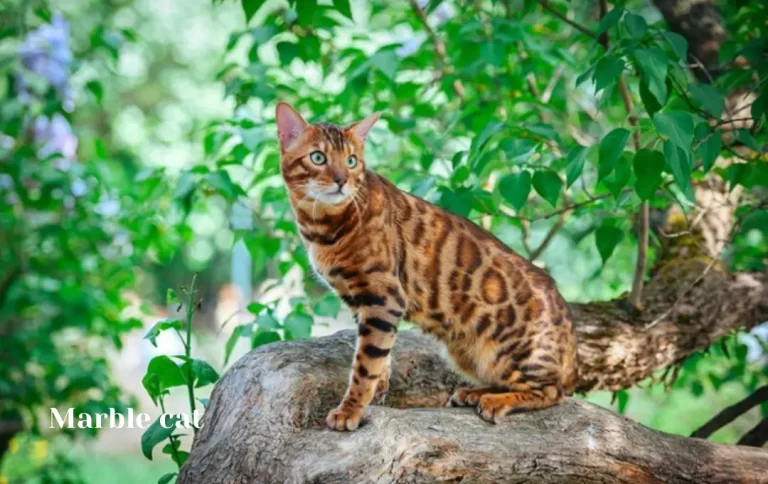Competitive Orange Bengal Cat Price | How Much Does a Bengal Cat Cost? (2023 Price Guide)
Bengal cats have always held a special place in the hearts of feline enthusiasts. Their distinctive wild appearance, vibrant coats, and playful personalities make them highly sought-after companions. Among the various coat colors and patterns that Bengals come in, one hue stands out with its undeniable charm: orange.
In this comprehensive guide, we dive deep into the captivating world of orange Bengal cat price. Whether you’re an experienced Bengal cat enthusiast or a newcomer to the breed, this article will shed light on the unique qualities of orange Bengals and help you understand why they are prized among cat lovers.
What Influences the Price of Orange Bengals
The price of an orange Bengal cat is influenced by a combination of factors that determine its value in the market. Understanding these factors can help you appreciate why these magnificent felines can command a premium price. Here are the key influencers:
Breeder Reputation and Experience:
Reputable Bengal cat breeders with a long history of ethical breeding practices and a strong reputation often charge higher prices. Their dedication to maintaining the breed’s standards and producing healthy, well-socialized kittens adds value.
Pedigree and Champion Bloodlines:
The lineage of the orange Bengal cat plays a significant role in its price. Bengals with champion bloodlines or parents with show titles often have a higher market value. This lineage indicates the cat’s conformity to breed standards and superior quality.
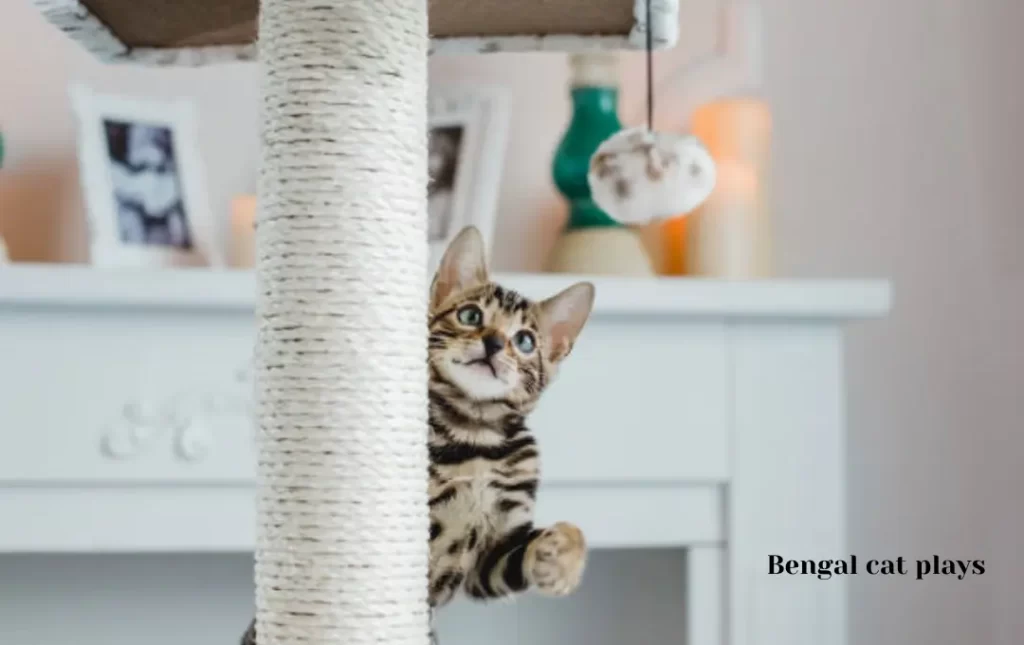
The rarity of Orange Bengals:
Orange Bengal cats, particularly those with deep, vibrant orange hues, are relatively rare compared to other Bengal colorations. Their scarcity contributes to the Bengal cat’s higher price. Unusual patterns and coat qualities also impact rarity.
Health and Genetic Factors:
The health and genetic background of the cat can affect its price. Kittens from parents with documented health clearances and genetic testing for common Bengal health issues may command a premium price due to reduced health risks.
Coat Color and Pattern Quality:
The intensity and clarity of the orange coloration, along with the coat’s overall pattern quality, significantly influence the price. Bengals with striking and well-defined rosettes or marbling tend to be valued more.
Geographic Location:
The region or location where you’re purchasing the Bengal can influence its price. In areas with a high cost of living or where Bengal cats are particularly popular, prices may be higher.
Inclusion of Services:
Some breeders include additional services in the purchase price, such as spaying/neutering, vaccinations, microchipping, and health guarantees. These added services can impact the overall cost.
Age and Training:
Kittens are generally more expensive than adult cats. Bengal kittens are in high demand due to their playful nature and the opportunity for owners to bond with them from a young age. Additionally, if the cat has undergone any specialized training, it may affect its price.
Demand and Market Trends:
Market demand and trends can fluctuate, affecting prices. Popular coat colors or patterns may experience higher demand and command higher prices.
Personalization and Preferences: – Some Bengal enthusiasts may have specific preferences for the shade of orange or the pattern of the coat. Factors like these can affect the individual value of an orange Bengal cat to potential buyers.
When considering the price of an orange Bengal cat, it’s essential to weigh these factors against your budget and preferences. While these cats may come with a higher price tag, their unique beauty and playful personalities often make them a worthwhile investment for dedicated Bengal enthusiasts.
Bengal Cat Breeds

How much do cat breeds Bengal cost?
Buying a Bengal at a young age could cost you between $4,000 – $10,000. The high price makes choosing the right breeder crucial.
Bengal cats are known for their distinctive appearances, and within this breed, there are various variations, each with its unique charm. In this section, we’ll provide an overview of Bengal cat variations, explore the unique appeal of orange Bengals, and delve into the characteristics that make orange Bengal cats so captivating.
Overview of Bengal Cat Variations
Bengal cats come in a stunning array of colors and patterns. While orange Bengals are a favorite among many enthusiasts, other notable variations include:
Spotted Bengals: These Bengals showcase large, rosette spots, resembling the patterns of a leopard or ocelot. The rosettes can vary in size and shape, adding to their visual allure.
Marbled Bengals: Marbled Bengals have a more swirled or marbled coat pattern, evoking the appearance of wild, swirling river currents. This pattern can be intricate and mesmerizing.
Snow Bengals: Snow Bengals come in varying shades of cream or off-white, with striking blue or green eyes. They can have either spotted or marbled patterns. Snow Bengals include Seal Lynx Point, Seal Mink, and Seal Sepia.
Charcoal Bengals: Charcoal Bengals have a darker, smokier coat color, often with enhanced contrast in their rosettes or marbling. The charcoal gene intensifies the coat’s coloration.
Silver Bengals: Silver Bengals feature a silver or pewter background coat color, creating a breathtaking contrast with their dark spots or marbling. Silver Bengals can also be categorized as spotted or marbled.
The Unique Appeal of Orange Bengals
Among these variations, orange Bengals stand out for their warm and vibrant coat color. Orange Bengals are celebrated for several reasons:
Bold and Vibrant Color: Orange Bengals exhibit a rich and fiery orange coat color that immediately captures attention. The intensity of their coloration can be mesmerizing.
Distinctive Markings: The dark, contrasting markings on their orange coat create a visually striking appearance. These markings can come in various patterns, such as rosettes or marbling.
Personality and Playfulness: Orange Bengals are known for their playful, energetic, and inquisitive nature. They often have an endearing penchant for interactive play and can form strong bonds with their owners.
Characteristics of Orange Bengal Cats
In addition to their captivating appearance, orange Bengal cats possess unique characteristics that make them cherished companions:
Active and Athletic: Orange Bengals are highly active and agile cats. They enjoy climbing, jumping, and exploring their surroundings. Providing ample opportunities for exercise and play is essential for their well-being.
Social and Interactive: These Bengals are known for their sociable and affectionate personalities. They thrive on interaction with their human family members and often seek out attention.
Intelligent and Curious: Orange Bengals are intelligent and curious cats. They enjoy problem-solving activities and benefit from mental stimulation, such as puzzle feeders and interactive toys.
Vocal Communicators: Some orange Bengals are quite vocal and may “talk” to their owners, conveying their needs and desires through a range of vocalizations.
Grooming Needs: While their short to medium-length coat requires minimal grooming, regular brushing helps reduce shedding and keeps their coat in top condition.
Orange Bengals, with their striking appearance and engaging personalities, have won the hearts of cat lovers worldwide. Whether you’re drawn to their unique coat color or their lively demeanor, these cats offer a special and rewarding companionship experience.
Bengal Cat Genetics
Bengal cat genetics play a fascinating role in determining their coat colors and patterns. In this section, we’ll explore how genetics influence Bengal cat colors, delve into the genetics behind orange coats, and understand how selective breeding can affect coat colors.
The Role of Genetics in Bengal Cat Colors
Genetic Background: Bengal cat coat colors and patterns are the result of a combination of genetic factors inherited from their parents. Genes determine the production and distribution of pigments in their fur, leading to the variety of coat colors and patterns seen in Bengals.
Pigment Types: Two main types of pigments are responsible for Bengal coat colors: eumelanin (black pigment) and pheomelanin (red and orange pigment). The interaction between these pigments and their distribution on the cat’s coat creates various colors and patterns.
Pattern Genes: Pattern genes determine whether a Bengal cat will have spots or marbling. Spots are governed by a different set of genes than marbling, and the combination of these genes influences the appearance of rosettes, swirls, or marbled patterns.
The Genetics Behind Orange Coats
Orange coats in Bengal cats, also referred to as red coats, are the result of specific genetic factors:
Pheomelanin Expression: The orange coloration in Bengal cats is primarily due to the expression of pheomelanin. This pigment is responsible for red and orange hues in the fur.
Recessive Gene: The orange coat color in Bengals is typically the result of a recessive gene known as the “o” allele. To express orange, a Bengal cat must inherit two copies of this recessive allele, one from each parent. Cats with two copies of the “o” allele will have orange or red fur.
Carrier Cats: Bengal cats with one “o” allele and one “non-o” allele are carriers of the orange gene but do not display the orange coat color themselves. When two carrier cats are bred, they have a chance of producing orange kittens if both pass on the “o” allele.
How Breeding Affects Coat Colors
Selective breeding plays a pivotal role in determining the coat colors and patterns of Bengal cats:
Purposeful Pairing: Bengal breeders carefully select parent cats with specific coat colors and patterns to achieve desired outcomes in their litters. For example, if they aim to produce orange Bengals, they will pair cats with the appropriate genetic makeup.
Preserving Traits: Breeders work to preserve and enhance desirable coat characteristics through successive generations. This involves tracking the lineage, studying genetics, and making informed breeding choices to maintain or improve coat quality.
Exploring Variations: Breeders may experiment with different pairings to produce unique variations within the Bengal breed, such as enhanced rosettes, intensified colors, or specific patterns.
Understanding Bengal cat genetics provides insight into the complex factors that contribute to their stunning coat colors and patterns. It’s through the careful study of genetics and selective breeding that Bengal enthusiasts can enjoy the diversity and beauty of these remarkable feline companions, including the alluring orange coat.
Factors Influencing Orange Bengal Cat Prices
The orange Bengal cat price is influenced by various factors that contribute to its overall value in the market. In this section, we’ll explore the key factors that play a role in determining the price of these captivating felines.
Breeder Reputation and Experience:
Reputable Bengal cat breeders with a long-standing history of ethical breeding practices often charge higher prices for their kittens. Their experience and commitment to the breed’s standards can enhance the value of the cats they produce.
Pedigree and Champion Bloodlines:
The lineage of an orange Bengal cat significantly affects its price. Cats with pedigrees that include champion bloodlines or parents with show titles are considered of superior quality and can command higher prices. The assurance of conforming to breed standards enhances their value.
Rarity and Demand of Orange Bengals:

The scarcity of orange Bengals in comparison to other Bengal colors contributes to their higher price. Their unique and eye-catching appearance is often in demand among Bengal enthusiasts, further driving up their market value.
Health and Genetic Factors:
The health and genetic background of the cat can affect its price. Kittens from parents with documented health clearances and genetic testing for common Bengal health issues may command a premium price due to reduced health risks.
Coat Color and Pattern Quality:
The intensity and clarity of the orange coloration, as well as the overall quality of the coat pattern (e.g., rosettes or marbling), significantly influence the price of an orange Bengal cat. Those with striking and well-defined markings tend to be valued more.
Geographic Location:
The region or location where you’re purchasing the Bengal cat can also affect its price. In areas with a high cost of living or where Bengal cats are particularly popular, prices may be higher due to increased demand.
Inclusion of Services:
Some breeders include additional services in the purchase price, such as spaying/neutering, vaccinations, microchipping, and health guarantees. These added services can impact the overall cost but often provide peace of mind to buyers.
Age and Training:
Kittens are generally more expensive than adult cats, as they are in high demand due to their playful nature and the opportunity for owners to bond with them from a young age. Additionally, if the cat has undergone any specialized training, it may affect its price.
Demand and Market Trends:
Market demand and trends can fluctuate, affecting prices. Popular coat colors, patterns, or variations may experience higher demand and command higher prices due to changing preferences among Bengal enthusiasts.
Personalization and Preferences:
Some Bengal enthusiasts may have specific preferences for the shade of orange or the pattern of the coat. Factors like these can affect the individual value of an orange Bengal cat to potential buyers.
When considering the price of an orange Bengal cat, it’s essential to weigh these factors against your budget and preferences. While these cats may come with a higher price tag, their unique beauty and engaging personalities often make them a worthwhile investment for dedicated Bengal enthusiasts.
Health Considerations
Ensuring the health and well-being of your Bengal cat is of paramount importance. In this section, we’ll delve into various health considerations, understand the importance of health guarantees when acquiring a Bengal cat, and explore how the health of a cat can influence the price, especially in the context of orange Bengals.
Understanding the Health of Bengal Cats:
Bengal cats, like all breeds, can be prone to certain health issues. It’s crucial for prospective Bengal owners to be aware of these health considerations:
Bengal Hypertrophic Cardiomyopathy (HCM): This is a genetic heart condition that can affect Bengal cats. Regular veterinary check-ups and echocardiograms are essential for detecting and monitoring HCM.
Progressive Retinal Atrophy (PRA): Some Bengal cats may be susceptible to PRA, a degenerative eye disease that can lead to blindness. Early detection and regular eye examinations are crucial for management.
Gastrointestinal Issues: Bengals can have sensitive stomachs, and dietary sensitivities are not uncommon. Monitoring their digestion and consulting your veterinarian if you notice recurring gastrointestinal problems is important.
Dental Issues: Bengal cats can be prone to dental problems like gingivitis and periodontal disease. Regular dental care and veterinary dental check-ups can help prevent dental issues.
Urinary Tract Issues: Bengals can be susceptible to urinary tract issues, including crystal formation and urinary tract infections. Proper hydration, a balanced diet, and monitoring for any signs of discomfort or urinary problems are essential.
The Importance of Health Guarantees:
When acquiring a Bengal cat, whether through a breeder or adoption, health guarantees provide a level of assurance regarding the cat’s well-being. Health guarantees typically cover:
Genetic Health: Reputable breeders often offer guarantees against known genetic health issues, such as HCM or PRA, for a specific period after purchase.
Vaccination and Health Records: Health guarantees may include documentation of vaccinations and veterinary records, ensuring that the cat is up-to-date on preventive healthcare measures.
Return Policy: Some breeders offer a return policy within a specified timeframe if a severe health issue is detected, allowing you to exchange the cat or receive compensation.
How Health Affects Orange Bengal Prices:
The health of an orange Bengal cat can significantly impact its price:
Healthy Bloodlines: Bengal kittens from parents with documented health clearances and genetic testing for common health issues are often priced higher due to the reduced risk of genetic health problems.
Vet Check-ups: Bengal kittens that have received regular veterinary check-ups and vaccinations may be priced slightly higher, as this demonstrates responsible breeding and care.
Health Guarantees: Cats from breeders who offer comprehensive health guarantees often have higher initial prices but provide peace of mind regarding the cat’s well-being.
While it may seem tempting to prioritize a lower initial price when acquiring a Bengal cat, it’s crucial to consider the long-term cost of potential health issues. Investing in a cat from a reputable breeder who prioritizes health and offers guarantees can ultimately save you both financial and emotional stress down the road. The health of your Bengal cat is invaluable, and a responsible breeder will ensure that their cats are in the best possible condition before they become a part of your family.
Where to Find Orange Bengal Cats for Sale
If you’re in search of an orange Bengal cat to welcome into your home, there are several avenues to explore. In this section, we’ll guide you through the various options for finding orange Bengal cats for sale, including reputable breeders, Bengal cat rescues and shelters, and online platforms and classifieds.
Reputable Bengal Cat Breeders:
Local Breeders: Research Bengal cat breeders in your local area or within a reasonable driving distance. Reputable breeders can provide healthy, well-socialized Bengal kittens. Look for breeders with a history of ethical breeding practices and positive reviews from previous buyers.
Breed Clubs and Organizations: Bengal breed clubs and organizations often maintain directories of member breeders who adhere to high breeding standards. Check these resources for a list of reputable breeders in your region.
Cat Shows: Attend cat shows and expos in your area to meet breeders in person, see their cats, and discuss the availability of orange Bengal kittens. These events can be a valuable opportunity to connect with knowledgeable breeders.
Bengal Cat Rescues and Shelters:
Local Shelters: Check local animal shelters and rescue organizations for Bengal cats in need of homes. While finding an orange Bengal cat in a shelter may be less common, it’s worth exploring, and you may also consider adopting a Bengal with a different coat color.
Bengal-Specific Rescues: Some rescue organizations specialize in Bengal cats. Search for Bengal cat rescues or breed-specific rescues online to see if they have any orange Bengals available for adoption.
Online Platforms and Classifieds:
Websites and Forums: Explore online platforms and forums dedicated to Bengal cat enthusiasts. These communities often have classified sections where breeders and owners post advertisements for Bengal kittens and cats.
Pet Adoption Websites: Websites like Petfinder and Adopt-a-Pet feature listings from shelters, rescues, and individuals looking to rehome Bengal cats, including orange Bengals.
Social Media Groups: Facebook groups and other social media platforms may have Bengal cat adoption or sale groups where you can connect with breeders and owners.
Online Classifieds: Popular online classified websites like Craigslist and Gumtree may occasionally have listings for Bengal cats. Exercise caution and ensure that you’re dealing with reputable individuals when using these platforms.
When searching for an orange Bengal cat, it’s essential to be patient and conduct thorough research. Take the time to visit breeders, shelters, or individuals to meet the cats in person and assess their health and temperament. Ask questions about the cat’s background, health history, and any available health guarantees. Remember that the well-being of the cat should be your top priority, so prioritize ethical breeders and responsible rehoming sources.
Preparing for Ownership
Before bringing an orange Bengal cat into your home, there are essential steps to take to ensure a smooth transition for both you and your new feline companion. In this section, we’ll cover how to budget for an orange Bengal cat, prepare your home for their arrival, and make the right choice when selecting a Bengal kitten.
Budgeting for an Orange Bengal Cat:
Initial Purchase or Adoption Fee: Determine your budget for acquiring an orange Bengal cat. Consider whether you plan to purchase from a breeder or adopt from a shelter or rescue. Prices can vary significantly, so be prepared for this initial expense.
Ongoing Expenses: Factor in the ongoing costs of Bengal cat ownership, including food, litter, grooming supplies, toys, and regular veterinary care. Bengal cats may have higher energy levels and require more engaging toys and enrichment, so budget accordingly.
Healthcare Costs: Allocate funds for routine veterinary visits, vaccinations, spaying/neutering (if not already done), and unexpected medical expenses. Bengal cats are generally healthy, but it’s essential to be prepared for any health-related costs.
Grooming and Supplies: Bengal cats have specific grooming needs, including regular brushing. Invest in grooming tools and supplies as well as cat furniture, scratching posts, and climbing structures.
Pet Insurance: Consider purchasing pet insurance to help offset potential medical expenses. Research different insurance providers and plans to find one that suits your needs and budget.
Emergency Fund: It’s wise to have an emergency fund set aside for unexpected expenses, such as accidents or sudden illnesses.
Setting Up Your Home for a Bengal:
Secure Living Space: Bengal cats are known for their agility and curiosity. Ensure that your home is secure and free of hazards, including toxic plants, chemicals, and small objects that could be swallowed.
Enrichment and Toys: Provide plenty of toys, interactive puzzle feeders, and climbing structures to keep your Bengal mentally and physically stimulated. Bengals thrive on engagement and play.
Litter Box and Hygiene: Set up a clean litter box in a quiet, accessible location. Bengals appreciate a clean environment, so scoop the litter box daily and change the litter regularly.
Comfortable Sleeping Areas: Offer comfortable sleeping spots, such as soft beds or blankets, in various locations around your home.
Safe Outdoor Space (Optional): If you have outdoor space, consider creating a secure outdoor enclosure or “catio” to allow your Bengal to enjoy the outdoors safely.
Choosing the Right Bengal Kitten:
Visit Reputable Breeders: If you’re purchasing from a breeder, visit their cattery to meet the kittens and assess their living conditions. Ask questions about the kitten’s health history, socialization, and breeding practices.
Observe Temperament: Spend time with the Bengal kittens to gauge their temperaments and personalities. Look for a kitten that matches your lifestyle and preferences.
Ask for Health Records: Request health records, including vaccinations and any genetic health testing that the breeder has performed on the kittens’ parents.
Ask About Guarantees: Inquire about health guarantees and return policies offered by the breeder. Reputable breeders often provide guarantees for genetic health issues.
Consider Adoption: If you’re adopting from a shelter or rescue, ask about the cat’s history, behavior, and any available medical records. Be open to adopting an older cat if their temperament aligns with your expectations.
By budgeting responsibly, preparing your home for a Bengal’s unique needs, and selecting the right kitten or cat, you can set the stage for a happy and fulfilling relationship with your orange Bengal companion. Remember that Bengal cats thrive on interaction and engagement, so invest time in building a strong bond and providing a stimulating environment for your new feline friend.
Caring for Your Orange Bengal Cat
Providing proper care for your orange Bengal cat is essential for their health and happiness. In this section, we’ll explore diet and nutrition guidelines, grooming needs specific to orange Bengals, and exercise and enrichment activities to keep them mentally and physically engaged.
Diet and Nutrition Guidelines:
High-Quality Cat Food: Choose a high-quality cat food that meets the nutritional needs of your Bengal. Look for options that list a quality protein source (such as poultry or fish) as the primary ingredient. Consult with your veterinarian for food recommendations tailored to your cat’s age and activity level.
Portion Control: Be mindful of portion sizes to prevent overfeeding or underfeeding. Follow the feeding guidelines on the cat food packaging, but adjust as needed based on your cat’s individual metabolism and activity level.
Hydration: Ensure your Bengal has access to fresh, clean water at all times. Some cats enjoy drinking from running water sources, so consider using a cat water fountain.
Avoid Free Feeding: Instead of leaving food out all day, establish a feeding schedule to control calorie intake and monitor your cat’s eating habits.
Monitor Weight: Regularly check your Bengal’s weight and body condition. If you notice any significant changes, consult your veterinarian to adjust the diet accordingly.
Grooming Needs of Orange Bengals:
Brushing: Orange Bengal cats typically have short to medium-length coats that require minimal grooming. However, regular brushing helps reduce shedding and keeps their coat in top condition. Use a soft-bristle brush or a grooming mitt to remove loose hair.
Nail Trimming: Trim your Bengal’s nails as needed to prevent them from becoming too long and causing discomfort or damage. Use cat nail clippers or consult a veterinarian or groomer for guidance if you’re unsure.
Ear Cleaning: Check your Bengal’s ears regularly for dirt or wax buildup. If needed, clean their ears with a cat-safe ear-cleaning solution and a soft cotton ball. Avoid inserting anything deep into the ear canal.
Dental Care: Dental health is essential. Brush your Bengal’s teeth regularly with a cat-specific toothbrush and toothpaste. Dental treats or toys designed to promote oral hygiene can also help.
Exercise and Enrichment Activities:
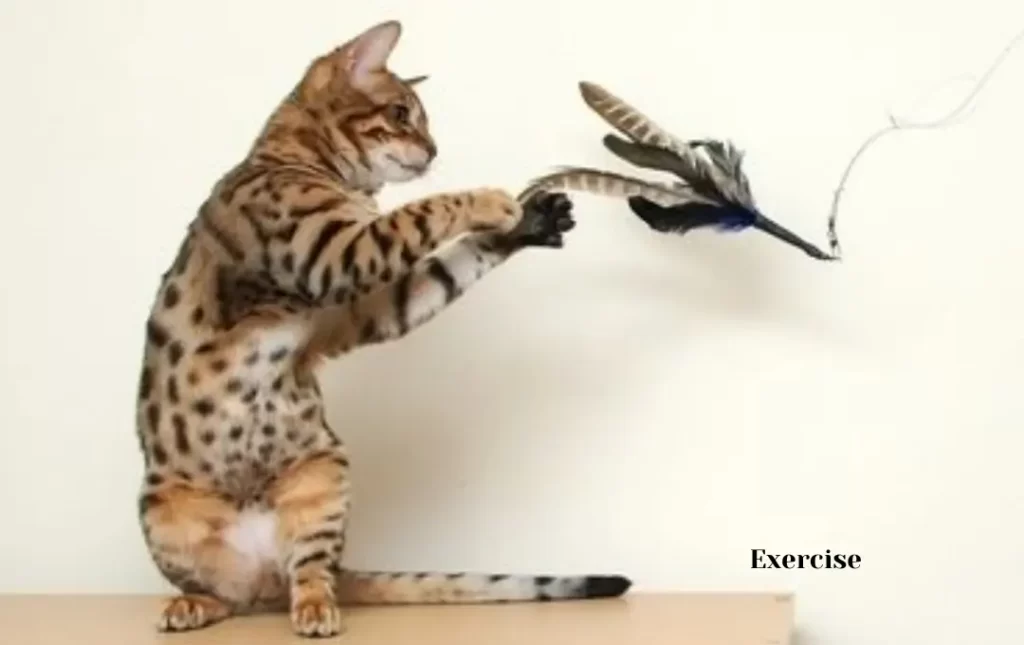
Interactive Play: Bengals are active and playful cats that enjoy interactive play. Engage them with feather wands, laser pointers, and interactive toys that mimic the movements of prey. Regular play sessions help satisfy their hunting instincts.
Climbing and Perching: Provide cat trees, shelves, and perches to allow your Bengal to climb and observe their surroundings. Bengals love to be up high, so these structures offer mental and physical stimulation.
Puzzle Feeders: Use puzzle feeders or treat-dispensing toys to make mealtime more engaging. These toys require your Bengal to work for their food, stimulating their problem-solving skills.
Rotate Toys: To prevent boredom, rotate your cat’s toys periodically. Introducing new toys and changing their environment can keep them mentally stimulated.
Outdoor Enclosures (Optional): If you have access to outdoor space, consider creating a secure outdoor enclosure or “catio” where your Bengal can safely enjoy the outdoors.
Regular exercise and mental stimulation are crucial for Bengal cats to prevent boredom and behavior issues. Provide a variety of activities and playtime opportunities to keep your orange Bengal cat engaged and content.
frequently asked question
Conclusion
In conclusion, the orange Bengal cat price can vary significantly based on various factors, including breeder reputation, pedigree, coat quality, geographic location, and market demand. These captivating felines, known for their vibrant orange coat and striking markings, are often considered a prized addition to families and individuals who appreciate their unique beauty and engaging personalities.
When considering the purchase of an orange Bengal cat, it’s essential to prioritize ethical breeding practices and the cat’s well-being. Reputable breeders invest in the health, genetics, and socialization of their cats, often offering health guarantees and transparency about their breeding methods.


